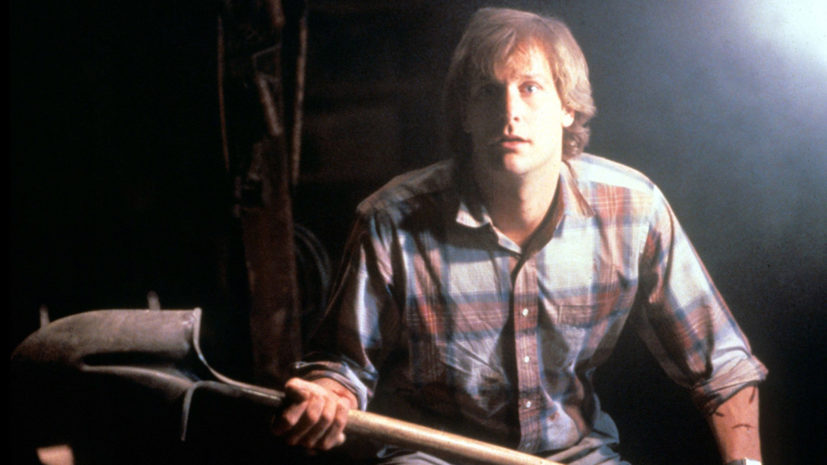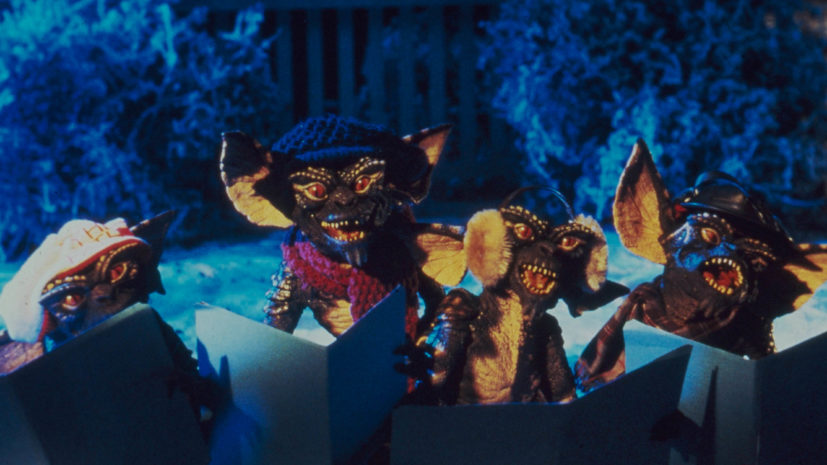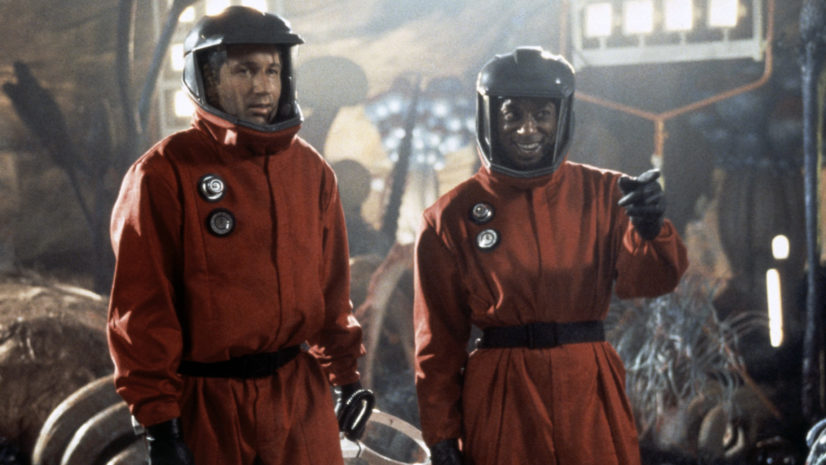AMBLIN: How did the Arachnophobia project come to your attention? Were you looking for something specifically to make your directorial debut?
MARSHALL: I hadn't really thought about directing. I was pretty happy producing Amblin Entertainment movies. I was a second unit director on a lot of movies for Steven Spielberg and Bob Zemeckis. I was on the set of Always up in Montana, and I was doing second unit on that. Jeffrey Katzenberg [at that time still with Walt Disney Studios] came by the set and he said, "We think it's time maybe you step up to the first chair. We think we have a script that you might like," and he handed me Arachnophobia.
AMBLIN: What was it about the screenplay that appealed to you where you thought, "This'll be my first one as director"?
MARSHALL: Well, it wasn't Shakespeare and I thought I could handle it. I liked the setup. I liked the setup of the spider hitchhiking its way back in a coffin from South America. It kind of reminded me of The Birds [the 1963 Alfred Hitchcock film starring Tippi Hedren and Rod Taylor]. If you think about it, The Birds wasn't really about the birds. The Birds was about this couple that have a romantic weekend outside of San Francisco, and then all these weird, scary things start happening to them. That's what appealed to me. It was sort of a horror movie, but it did have a lot of opportunity for humor. I just thought, "If this is going to be my first film, I think I get it." The script had a lot of the basic horror elements in it, but then I hired Wesley Strick to come in and expand the story and we went much more down the path of taking The Birds as our inspiration, where it was really about this family that had moved to the country from San Francisco and then this spider invasion happens all around them.
AMBLIN: You brought Strick aboard for rewrites on Don Jakoby’s original draft. What was it in his work that matched your vision for the film?
MARSHALL: I thought he had a good sensibility. He'd written Cape Fear for Amblin, we’d read a couple of his scripts, and we got along really well. He understood my approach to Arachnophobia, and I liked his dialogue and he wrote kind of creepy scenes. I thought that was fun, but he wrote good characters. I think that what's important in all of these movies is you've got to care about the characters and he wrote great characters for this movie.
AMBLIN: In casting Arachnophobia, what were the difficulties bringing on human actors in a movie where their co-stars were hundreds of real spiders?
MARSHALL:  It was really getting somebody who was up for the game and Jeff Daniels came in and he's just a wonderful actor. We sat around and talked about his character and what that would be and at the end of the meeting, he said, "Let's do this," and I said, "Great!" He's just a terrific guy and really was up for all of the antics that we had to go through with him and spiders and he actually said, "I'm kind of scared of spiders anyway, I won't be acting a lot of the time."
It was really getting somebody who was up for the game and Jeff Daniels came in and he's just a wonderful actor. We sat around and talked about his character and what that would be and at the end of the meeting, he said, "Let's do this," and I said, "Great!" He's just a terrific guy and really was up for all of the antics that we had to go through with him and spiders and he actually said, "I'm kind of scared of spiders anyway, I won't be acting a lot of the time."
AMBLIN: Were there any on-set issues between cast members and the actual spiders?
MARSHALL: Not really, because we knew these spiders were not poisonous. It’s like worrying about the snakes on Raiders of the Lost Ark. If the snakes aren't poisonous, it's not really scary. Although you do have that tactile reaction when a spider jumps on your hand no matter what you do.
There were some famous stories, sort of urban myths around the stage we shot on at Warner Brothers, that some poisonous spiders had escaped. For many years after that, I would get a call about spiders on the stage at Warner's, but no, we didn't have any poisonous spiders.
AMBLIN: For the film, you specifically selected the Avondale spider, a breed from New Zealand and Australia that was absolutely not poisonous, just looked creepy.
MARSHALL: Yes. I held what I called the Spider Olympics, where I had the bug guy, Supervising Entomologist Steve Kutcher, bring in these spiders and I really put them through their paces to see if they could climb a glass, if they looked scary, to see how big they were or if they looked good on camera and how we could motivate them. It was usually with a hair dryer and hot air would motivate them. We had a spider condominium where we had different drawers with spiders that could climb better than others, some that were faster than others. It was really a science of different spider actors.
AMBLIN: Despite casting the spiders by their individual skills as you describe, did you ever have days where they really slowed you down and took a lot of takes while your human actors were hitting everything perfectly?
MARSHALL:  There were days where I kind of let it be what it would be, I was kind of "go with the flow." So we would put a spider or however many spiders we needed in a situation and then we would roll and depending on what the spider did, then that's what would take us to our next shot. For example, when when we set them for the bathroom sink gag, we blew hot air and they came bursting out of the drain. Expectations are fantastic, but I never dreamed that they would just explode. Then of course with the popcorn gag, there were a lot of takes on the popcorn. The popcorn was probably the hardest one and in the shot that we got, the spider comes out and we follow it. That's all ad-libbed by the spider.
There were days where I kind of let it be what it would be, I was kind of "go with the flow." So we would put a spider or however many spiders we needed in a situation and then we would roll and depending on what the spider did, then that's what would take us to our next shot. For example, when when we set them for the bathroom sink gag, we blew hot air and they came bursting out of the drain. Expectations are fantastic, but I never dreamed that they would just explode. Then of course with the popcorn gag, there were a lot of takes on the popcorn. The popcorn was probably the hardest one and in the shot that we got, the spider comes out and we follow it. That's all ad-libbed by the spider.
AMBLIN: Now you'd just worked with John Goodman on Always. What was it in Goodman that you felt was right for how you perceived Delbert McClintock, the insect exterminator? He's not necessarily the most comedic character in the show, so it's not Goodman working in a broad Raising Arizona mode. He's kind of somewhere between.
MARSHALL:  I tried to cast really great actors in the character parts and the smaller parts. I did feel like it needed a little bit of comic relief in this story because it was going to be so creepy. John had a week off every month from his television series Roseanne. I had to shoot half of his scenes in one week, then the next month, I had to shoot the rest of his stuff. So I didn’t really get to rehearse with him. He just showed up in Cambria [California, the town where the production shot] and put on the outfit. We shot all his scenes in the order they appeared in the script. He got out of Delbert's truck, did the first scene and I said to him, "Well, John, who is that? Who is Delbert?” He said, "It's based on two characters, an exterminator I knew and one of my high school science teachers. I kind of combined them,” and I said, “Okay."
I tried to cast really great actors in the character parts and the smaller parts. I did feel like it needed a little bit of comic relief in this story because it was going to be so creepy. John had a week off every month from his television series Roseanne. I had to shoot half of his scenes in one week, then the next month, I had to shoot the rest of his stuff. So I didn’t really get to rehearse with him. He just showed up in Cambria [California, the town where the production shot] and put on the outfit. We shot all his scenes in the order they appeared in the script. He got out of Delbert's truck, did the first scene and I said to him, "Well, John, who is that? Who is Delbert?” He said, "It's based on two characters, an exterminator I knew and one of my high school science teachers. I kind of combined them,” and I said, “Okay."
AMBLIN: Speaking of your supporting cast, the entire supporting cast is just full of really great character actors including Henry Jones and Frances Bay, Stuart Pankin, Roy Brocksmith and Kathy Kinney, and Peter Jason. Did you leave room for any improv, or for them to bring in their special gifts as comedic performers?
MARSHALL: I always like to work with people who are gifted like that. That's why I do a couple of takes. I like to do a take where we stay with what's in the script, and then I give them a chance and say, "Do something that's within the character if you want." We do a take or two like that. I do think there are always some moments that end up in the movie. A good friend, Peter Jason, a wonderful character actor—he came up with a lot of stuff for his part as Coach Beechwood.
AMBLIN: He's really great in the film. Coach is actually one of the funnier elements of it all. Speaking of the humor, horror and comedy are so dependent on hitting just the right tones. Can you recall, especially as a first-time director, how you worked to find that right balance between scares and levity? Was it baked into the screenplay, or did a lot of it come during the shoot?
MARSHALL:  I think it was the tone that we set during the production. I tried to keep it as real as possible because I didn't want it to be too campy. Delbert got a little bit campy, I thought, but he was kind of a larger-than-life character, anyway. I thought what's scariest to people is everyday common things that we all would freak out by. I know that every morning when I get up to put on my slippers, I still shake them off.
I think it was the tone that we set during the production. I tried to keep it as real as possible because I didn't want it to be too campy. Delbert got a little bit campy, I thought, but he was kind of a larger-than-life character, anyway. I thought what's scariest to people is everyday common things that we all would freak out by. I know that every morning when I get up to put on my slippers, I still shake them off.
AMBLIN: Poor Dr. Metcalf! [Henry Jones’s gruff old town doctor, who meets a painful fate lurking in his house slippers.] Yeah, that's pretty horrible stuff.
MARSHALL: I tried to come up with those kind of situations that were very everyday life. You sit down in front of the TV to watch a movie eating popcorn and you stick your hand in the popcorn. It was fun to come up with that kind of stuff and we just played it straight and that made for the scariness, but also for the humor. I knew the film was working in the first preview when I looked down the aisles and everybody had their feet up on their chairs.
AMBLIN: The opening sequence in Venezuela calls to mind not only your future directorial effort Congo, but the opening of Raiders of the Lost Ark and the actual production of Raiders when you went to Hawaii and had to airdrop equipment into a valley for the location.
MARSHALL: Right. I love to shoot in natural locations, in real locations. As part of the storytelling, we discovered that there were these things called tepui [mesas, or plateau-topped mountains] that exist down in Venezuela and in South America and that the environment of some of these tepui acted as ecological islands where there could be species that had never gotten out and were rare. That inspired the story. I wanted to go there and shoot because there's nothing better than the real place.
We were very adventurous back then. On Always we were up in Montana and on the Indiana Jones films we were around the world. We took this group down to Venezuela and there was one landing strip in Canaima, which is a national park there. There was a resort, we took over the resort and we helicoptered to the tepui with the crew and we're shooting on these real tepui that gave that authenticity to the film and made it really fun for us to make the movie.
 Frank Marshall, who along with Kathleen Kennedy and Steven Spielberg formed Amblin Entertainment in 1981, has produced some of the most memorable and celebrated movies in cinema history. From his early work with directors Orson Welles (The Other Side of the Wind), Martin Scorsese (The Last Waltz), Peter Bogdanovich (Paper Moon) and Walter Hill (The Warriors), through more than a decade with Amblin Entertainment (the Indiana Jones films, Gremlins, The Goonies, the Back to the Future trilogy, Who Framed Roger Rabbit), to setting out his own shingle with Kennedy at The Kennedy/Marshall Company (The Sixth Sense, The Jason Bourne franchise), and most recently on Amblin's Jurassic World films and the documentary Laurel Canyon, Marshall’s work across five decades in the industry is legendary. After nearly 20 years in the business producing film and television, however, it was near the end of his tour of duty at Amblin that Marshall made the big move from producing and directing second-unit on many of Steven Spielberg’s films to collaborating with actors and commanding a small army of arachnids as director of our horror-comedy Arachnophobia, which scuttled into darkened theaters 30 years ago on July 18, 1990.
Frank Marshall, who along with Kathleen Kennedy and Steven Spielberg formed Amblin Entertainment in 1981, has produced some of the most memorable and celebrated movies in cinema history. From his early work with directors Orson Welles (The Other Side of the Wind), Martin Scorsese (The Last Waltz), Peter Bogdanovich (Paper Moon) and Walter Hill (The Warriors), through more than a decade with Amblin Entertainment (the Indiana Jones films, Gremlins, The Goonies, the Back to the Future trilogy, Who Framed Roger Rabbit), to setting out his own shingle with Kennedy at The Kennedy/Marshall Company (The Sixth Sense, The Jason Bourne franchise), and most recently on Amblin's Jurassic World films and the documentary Laurel Canyon, Marshall’s work across five decades in the industry is legendary. After nearly 20 years in the business producing film and television, however, it was near the end of his tour of duty at Amblin that Marshall made the big move from producing and directing second-unit on many of Steven Spielberg’s films to collaborating with actors and commanding a small army of arachnids as director of our horror-comedy Arachnophobia, which scuttled into darkened theaters 30 years ago on July 18, 1990.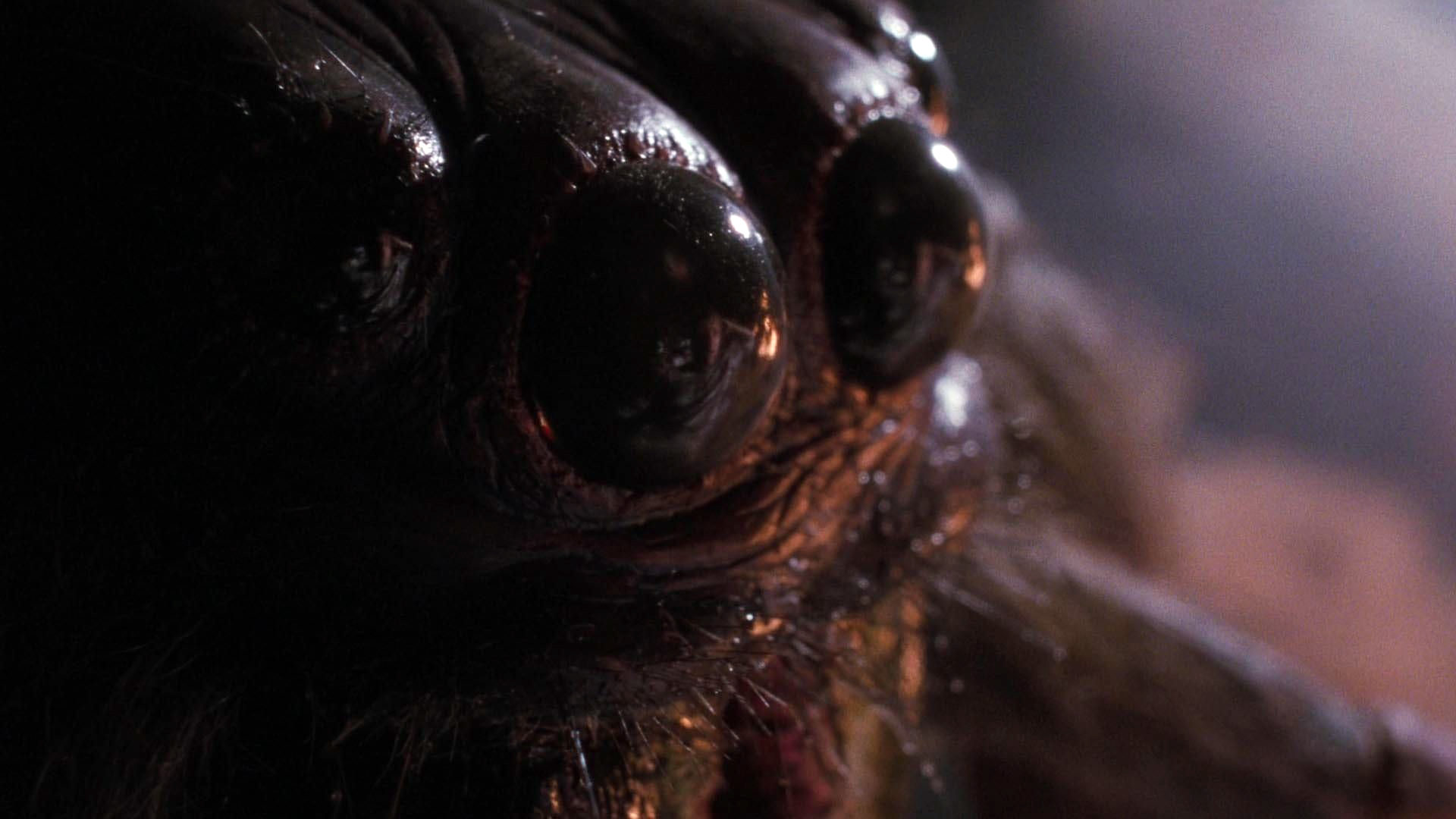
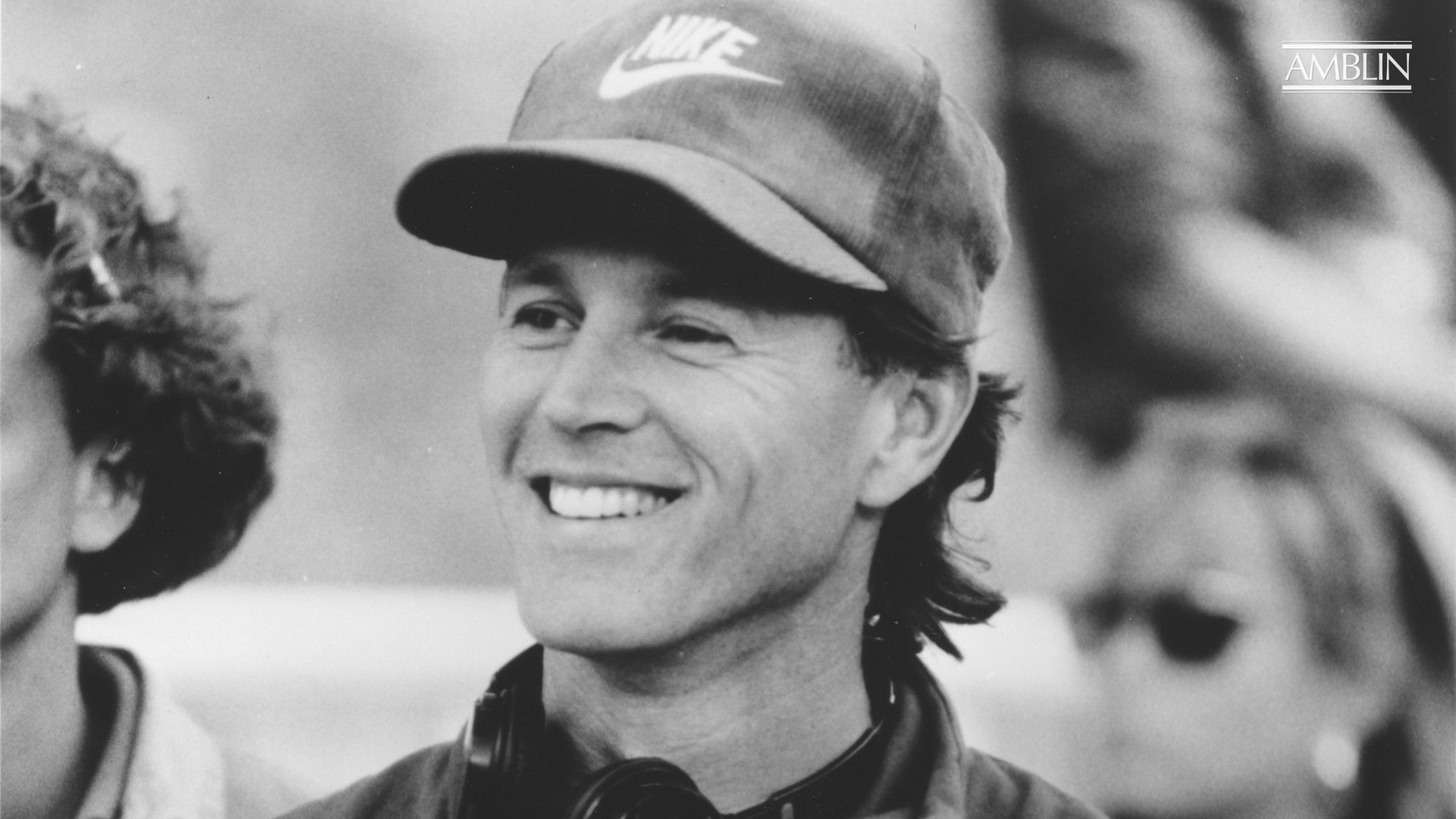
 It was really getting somebody who was up for the game and Jeff Daniels came in and he's just a wonderful actor. We sat around and talked about his character and what that would be and at the end of the meeting, he said, "Let's do this," and I said, "Great!" He's just a terrific guy and really was up for all of the antics that we had to go through with him and spiders and he actually said, "I'm kind of scared of spiders anyway, I won't be acting a lot of the time."
It was really getting somebody who was up for the game and Jeff Daniels came in and he's just a wonderful actor. We sat around and talked about his character and what that would be and at the end of the meeting, he said, "Let's do this," and I said, "Great!" He's just a terrific guy and really was up for all of the antics that we had to go through with him and spiders and he actually said, "I'm kind of scared of spiders anyway, I won't be acting a lot of the time." There were days where I kind of let it be what it would be, I was kind of "go with the flow." So we would put a spider or however many spiders we needed in a situation and then we would roll and depending on what the spider did, then that's what would take us to our next shot. For example, when when we set them for the bathroom sink gag, we blew hot air and they came bursting out of the drain. Expectations are fantastic, but I never dreamed that they would just explode. Then of course with the popcorn gag, there were a lot of takes on the popcorn. The popcorn was probably the hardest one and in the shot that we got, the spider comes out and we follow it. That's all ad-libbed by the spider.
There were days where I kind of let it be what it would be, I was kind of "go with the flow." So we would put a spider or however many spiders we needed in a situation and then we would roll and depending on what the spider did, then that's what would take us to our next shot. For example, when when we set them for the bathroom sink gag, we blew hot air and they came bursting out of the drain. Expectations are fantastic, but I never dreamed that they would just explode. Then of course with the popcorn gag, there were a lot of takes on the popcorn. The popcorn was probably the hardest one and in the shot that we got, the spider comes out and we follow it. That's all ad-libbed by the spider. I tried to cast really great actors in the character parts and the smaller parts. I did feel like it needed a little bit of comic relief in this story because it was going to be so creepy. John had a week off every month from his television series Roseanne. I had to shoot half of his scenes in one week, then the next month, I had to shoot the rest of his stuff. So I didn’t really get to rehearse with him. He just showed up in Cambria [California, the town where the production shot] and put on the outfit. We shot all his scenes in the order they appeared in the script. He got out of Delbert's truck, did the first scene and I said to him, "Well, John, who is that? Who is Delbert?” He said, "It's based on two characters, an exterminator I knew and one of my high school science teachers. I kind of combined them,” and I said, “Okay."
I tried to cast really great actors in the character parts and the smaller parts. I did feel like it needed a little bit of comic relief in this story because it was going to be so creepy. John had a week off every month from his television series Roseanne. I had to shoot half of his scenes in one week, then the next month, I had to shoot the rest of his stuff. So I didn’t really get to rehearse with him. He just showed up in Cambria [California, the town where the production shot] and put on the outfit. We shot all his scenes in the order they appeared in the script. He got out of Delbert's truck, did the first scene and I said to him, "Well, John, who is that? Who is Delbert?” He said, "It's based on two characters, an exterminator I knew and one of my high school science teachers. I kind of combined them,” and I said, “Okay." I think it was the tone that we set during the production. I tried to keep it as real as possible because I didn't want it to be too campy. Delbert got a little bit campy, I thought, but he was kind of a larger-than-life character, anyway. I thought what's scariest to people is everyday common things that we all would freak out by. I know that every morning when I get up to put on my slippers, I still shake them off.
I think it was the tone that we set during the production. I tried to keep it as real as possible because I didn't want it to be too campy. Delbert got a little bit campy, I thought, but he was kind of a larger-than-life character, anyway. I thought what's scariest to people is everyday common things that we all would freak out by. I know that every morning when I get up to put on my slippers, I still shake them off. I like to work with people that I get along with, people who do great work and Chris had done that for us on Gremlins. Certainly, he seemed like the right guy to go with to create Big Bob, the master spider. There’s always a familiarity with working with somebody who makes it so much easier because you already have a shorthand with them and you're comfortable working with them. Chris knew how I thought about things. We knew we had to create these creatures that really looked like they were real. It's the magic of movies. We combined Big Bob with the giant tarantulas that we also had on the set. The movements, hopefully you don't know one from the other and they blend in and look the same.
I like to work with people that I get along with, people who do great work and Chris had done that for us on Gremlins. Certainly, he seemed like the right guy to go with to create Big Bob, the master spider. There’s always a familiarity with working with somebody who makes it so much easier because you already have a shorthand with them and you're comfortable working with them. Chris knew how I thought about things. We knew we had to create these creatures that really looked like they were real. It's the magic of movies. We combined Big Bob with the giant tarantulas that we also had on the set. The movements, hopefully you don't know one from the other and they blend in and look the same.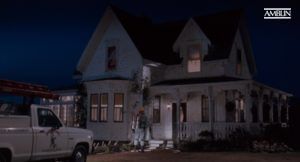 It was that time when very thin lines like spider legs did not work very well. CGI was really just beginning. I thought, "Okay, I think this could work in a wide shot of the house with it covered and we don't get to look at it too long. There's no other way to do it. ILM took on the challenge. I think they did a great job, and I don't think it takes you out of the movie at all. I think it looks very real.
It was that time when very thin lines like spider legs did not work very well. CGI was really just beginning. I thought, "Okay, I think this could work in a wide shot of the house with it covered and we don't get to look at it too long. There's no other way to do it. ILM took on the challenge. I think they did a great job, and I don't think it takes you out of the movie at all. I think it looks very real. Yes, it's things like the very first victim, the guy who gets bitten in the jungle there because, how far can you go? Can you see any blood? It was really editor Michael Kahn who helped me through that sequence because when he put it together, he said, "You got the steak but you need the sizzle." What he meant was, I had a great scene where this guy dies, but I didn't have the pieces that I needed to ramp it up to be really dramatic and impactful. I did a couple inserts like the actor’s hands cramping and then sticking out as he grabs at things around him. Those inserts that are able to give what Michael calls the sizzle to the scene.
Yes, it's things like the very first victim, the guy who gets bitten in the jungle there because, how far can you go? Can you see any blood? It was really editor Michael Kahn who helped me through that sequence because when he put it together, he said, "You got the steak but you need the sizzle." What he meant was, I had a great scene where this guy dies, but I didn't have the pieces that I needed to ramp it up to be really dramatic and impactful. I did a couple inserts like the actor’s hands cramping and then sticking out as he grabs at things around him. Those inserts that are able to give what Michael calls the sizzle to the scene.